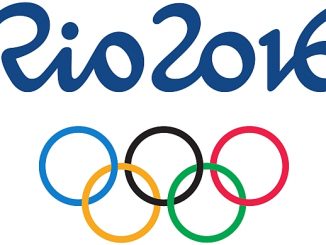
PALM DESERT, Aug. 4, 2016 – “Like addictive drugs, highly palatable foods trigger feel-good brain chemicals such as dopamine. … As a result, people keep eating, even when they’re not hungry.”
That’s from the definition of “Food Addiction” on the webmd.com Web site. The International Olympic Committee (IOC), aided by the Tokyo 2020 Olympic Organizing Committee, furthered their addiction to sports yesterday.
Already expecting more than its self-imposed limit of 10,500 athletes at the 2016 Rio Games, the IOC swallowed another five sports in a drive to look cooler, fitter and sexier (to youth, anyway) in 2020. In part to cover for their desire to add baseball and softball to the 2020 program, Tokyo will also add karate, sport climbing, surfing and skateboarding.
An estimated 474 additional athletes (plus the torrent of coaches and officials) will be added to the Games, with cuts in other sports coming to bring the athlete total back within the 10,500 boundary.
Fat chance.
What is needed is an intervention. And the IOC could get one in the next year, whether it wants it or not.
IOC President Thomas Bach pushed through a package of reforms in 2014 – Agenda 2020 – to make the Games more manageable and encourage more cities to bid for the Games. But the flight of traditional bidders for the 2022 Winter Games, the unending negative publicity about the preparations for Rio 2016 and the reported $51 billion overall cost of the 2014 Winter Games in Sochi have stifled interest.
For 2024, the current bidders are Budapest, Los Angeles, Paris and Rome.
But the new Mayor of Rome, Virginia Raggi, does not support the Games concept and sees as a waste of money where better roads, education and anti-poverty programs are the priorities. The Italian premier, Matteo Renzi, is in favor and the two will meet in the fall to determine how to proceed. One possible outcome is a public referendum, similar to the one that caused Hamburg to drop its candidacy in November of 2015, when 51.6% voted against the bid.
That would be a major embarrassment to the Olympic Movement and bring the number of bidders down to just three. Or there may be fewer.
Bach sees a need to engage youth and get them interested in the Games. But if the summer Games, especially, don’t go on a diet soon, the opportunities to find someone willing to host them will be even more limited.
But diet and exercise are the answer. Here are a few ways to cut the fat and make the Games more attractive to potential hosts:
- Cut the number of sports. The IOC will evaluate all of the sports on the Games program in 2017 and determine whether to cut entire sports, or individual events inside specific sports. Don’t hold your breath on this one; everyone is likely to make the cut.
- Cut the number of qualifiers in each sport and event. This can be a significant part of the answer, starting with the team sports. A quick review of the team sports in the Games – basketball, football, handball, hockey, rugby, volleyball, water polo – shows 12-16 teams per sport and 12-22 players per team. Cut them down: even cutting to 10 teams per sport reduces the athlete load by 492, and by going to eight reduces the count by 896! Do we really need 12 or more teams per sport? FIFA is going to 40 teams in its own world men’s championship, the World Cup. That’s the place for it.
- Require as many sports as possible to complete their competitions in one week or less. Why? Because with the Games held over two full weeks and sports running more than a week, venues cannot host more than one sport. Ergo, more venues means more costs in construction, equipment and people. Cut down the number of days each sport requires and the costs of the Games are reduced, potentially dramatically.
The IOC’s Olympic Charter used to state (in Rule 30 of the 1985 edition):
NOCs are reminded that, while the Olympic Games welcome the youth of the world, it is physically impossible to accommodate all the youth of the world and they are asked to use discretion and send to the Games only competitors adequately prepared for high level international competitions.
It’s time to get the Games on a diet, and with a little exercise of what constitutes “competitors adequately prepared for high level international competitions,” the Games of the Olympiad can be sweated down to a manageable size. Then watch how attractive a slender Games become to newly-smitten suitor cities!
¶ Rich Perelman has served and supported organizing committees of 20 multi-day, multi-venue events, including five Olympic Games, in the U.S., Canada and Europe. In addition to nearly 100 books and pamphlets, he has written for the Los Angeles Times, Track & Field News, Universal Sports and many other publications.
¶ Perelman, Pioneer offers professional communications and major-event planning, management and production. If we can add to your success, let us know how we can help!
¶ Stay informed with a free subscription to our commentaries by registering your e-mail address on the Perelman, Pioneer home page (subscription box on the right side of the screen).
¶ Want to know when new posts are up? Follow us at Twitter.com/Sports_Examiner



The Case Studies are super; I’m using some of them as a model for what I do.